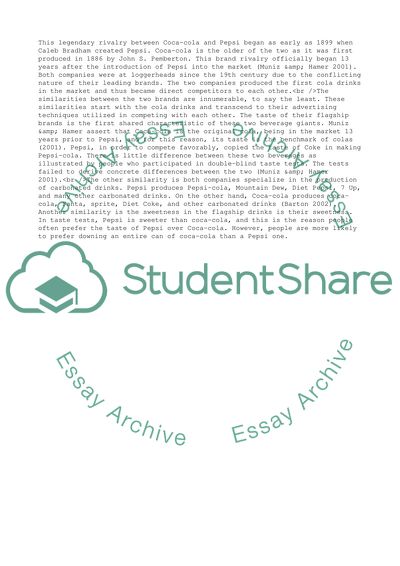Cite this document
(The Rivalry between Coca-cola and Pepsi Essay Example | Topics and Well Written Essays - 1750 words, n.d.)
The Rivalry between Coca-cola and Pepsi Essay Example | Topics and Well Written Essays - 1750 words. https://studentshare.org/business/1827710-coca-cola-vs-pepsi-cola
The Rivalry between Coca-cola and Pepsi Essay Example | Topics and Well Written Essays - 1750 words. https://studentshare.org/business/1827710-coca-cola-vs-pepsi-cola
(The Rivalry Between Coca-Cola and Pepsi Essay Example | Topics and Well Written Essays - 1750 Words)
The Rivalry Between Coca-Cola and Pepsi Essay Example | Topics and Well Written Essays - 1750 Words. https://studentshare.org/business/1827710-coca-cola-vs-pepsi-cola.
The Rivalry Between Coca-Cola and Pepsi Essay Example | Topics and Well Written Essays - 1750 Words. https://studentshare.org/business/1827710-coca-cola-vs-pepsi-cola.
“The Rivalry Between Coca-Cola and Pepsi Essay Example | Topics and Well Written Essays - 1750 Words”. https://studentshare.org/business/1827710-coca-cola-vs-pepsi-cola.


